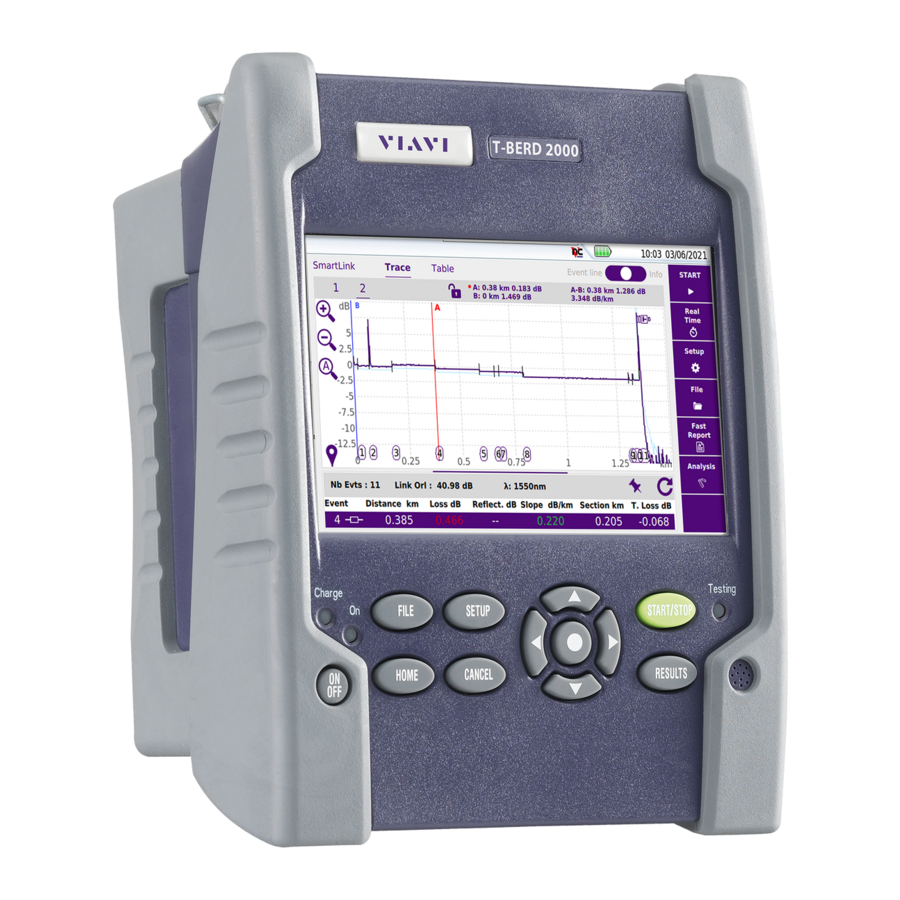
Viavi MTS 2000 User Manual
Handheld, modular platform designed for the construction, turn-up and maintenance of fiber networks
Hide thumbs
Also See for MTS 2000:
- Quick card (4 pages) ,
- Quick card (2 pages) ,
- Quick card user manual (4 pages)













Need help?
Do you have a question about the MTS 2000 and is the answer not in the manual?
Questions and answers